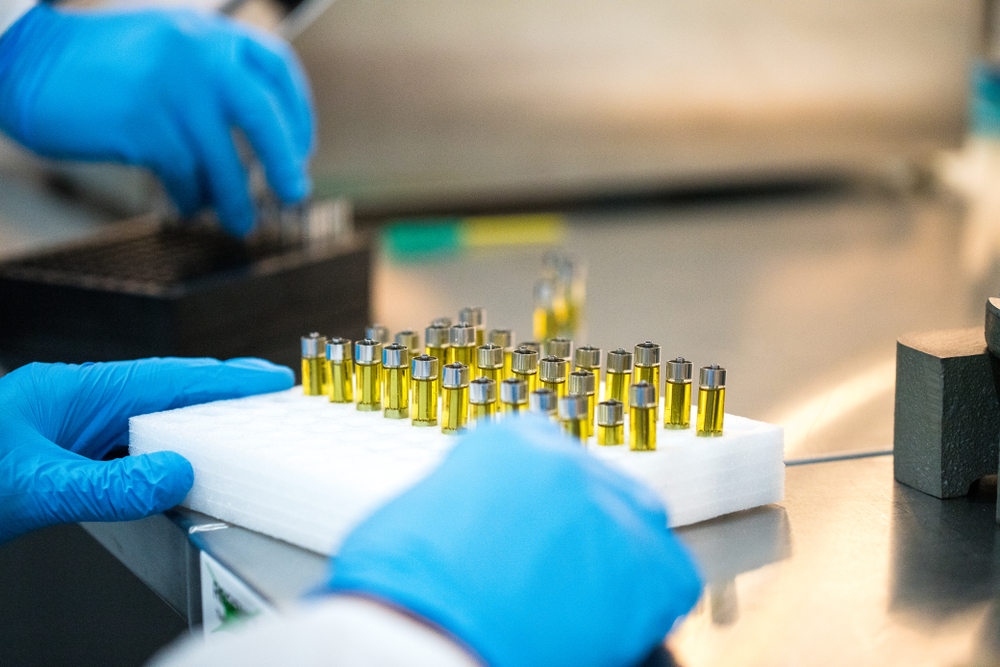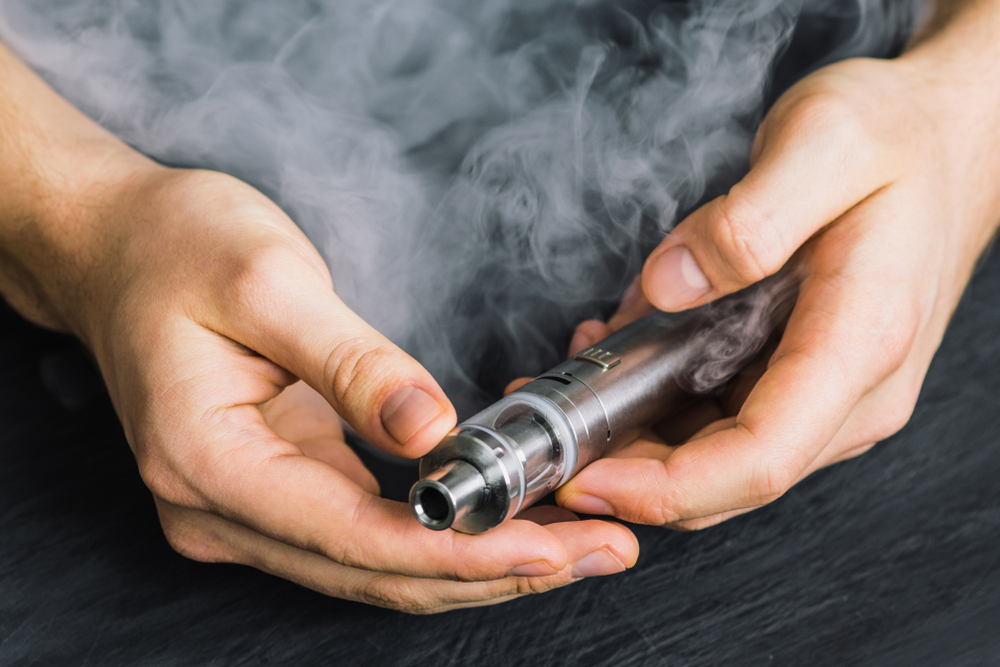
Thursday May 25, 2023
By Trevor Ross
 News
News
In the fall of 2021, the Pennsylvania Department of Health announced a comprehensive review of all vaporizer cartridges and disposable vape pens in the state. Then on February 4 of this year, when their review was complete, the DOH issued a sweeping recall declaring, “some added ingredients have not been approved for inhalation by the United States Food and Drug Administration (FDA).”
The list of recalled products was 18 pages long and left consumers wondering what they had been smoking and when it would be safe to trust retailers again. Thankfully, this was the first recall in the six-year history of Pennsylvania’s medical marijuana program, but hardly the first time health regulators have had to penalize processors for disregarding toxicity standards.
So once again consumers are forced to ask: do all vapes have metal in them? This article reviews the most recent data regarding heavy metals in vapes, where contaminants come from, and offers tips for avoiding toxic vape cartridges.
Where Does Metal Contamination Come From?
There are two chief sources for metal contamination in cannabis: the soil it grows in, and the equipment it is consumed from. The ability to absorb heavy metals from the surrounding soil is called phytoremediation. Cannabis is not the only plant that does this, but it does it very well. In fact, some have suggested that industrial hemp may have a future purifying contaminated soils. Ideally, that hemp would then be used to make textiles and fabrics which would not be consumed. When this cannabis is consumed, the metals pulled from the soil are passed onto the consumer.

The second source of metal contamination is from the devices used to consume cannabis, particularly vape cartridges. Regardless of make or model, all vaporizer cartridges have three fundamental components: a mouthpiece, a chamber filled with oil, and a heating element called an atomizer. The atomizer heats the oil until it evaporates, and the vapor is drawn through the mouthpiece. This atomizer, or heating element, is thought to be the source of potential metal contamination.
In 2021, researchers at Medicine Creek Analytics in Fife, Washington tested the aerosol produced by over a dozen randomly selected cartridges purchased from local licensed retailers. Their results indicated that, “chromium, copper, nickel, as well as smaller amounts of lead, manganese, and tin migrate into the cannabis oil and inhaled vapor.” They concluded that, “the heating device itself is a source of metal contamination,” and urged cannabis laboratories to test for a wider range of metals in both the oil and the resulting vapor (as opposed to only testing the oil before it is heated up).
Why Is There Lead in Vape Cartridges?
States with legal cannabis marketplaces require that vape cartridges be tested for unacceptable levels of metal contamination—particularly arsenic, cadmium, mercury, and lead. But even among states with legal marketplaces, there is no standardization. For instance, Washington state allows up to 1.2 micrograms per gram (ug/g) of lead in cannabis products while Michigan allows 2 ug/g. Oregon has no maximum limit at all.

States are effectively forced to allow for small amounts of lead because it is so cost-effective for the companies that use it. Lead is often tempered into other metals to make them cheaper and more flexible, particularly in electronics where small wires or pieces of metal are bent and shaped into tight spaces. But it’s also a tremendous cost-cutting measure, saving pennies per unit which scales up to millions per year. But to be clear, no amount of lead is really safe, and the CDC has stated definitely, “no safe blood lead level has been identified.”
Other Risks Associated with Vaping and Vape Carts
In February of 2022 when Pennsylvania health officials released their 18-page list of recalled vape products, they also released a 5-page list of additives not approved for inhalation by the FDA found in those hundreds of products. In addition to harmful metals leaching into the concentrate, some concentrates are being modified with additional terpenes, emulsifiers, and preservatives that are otherwise harmless, but become toxic when vaporized and inhaled.
For example, ethyl hexanoate has a fruity aroma and is approved for digestion, but it’s also flammable as both a liquid and a vapor and is not approved for inhalation. Similarly, benzyl bromoacetate is approved for digestion, but is also a known respiratory irritant. Both chemicals were found in vape cartridges in Pennsylvania.

Perhaps more infamously, a mysterious vaping-related illness presented itself in 2019 and led to at least 60 deaths. E-cigarette or Vaping Product-Use Associated Lung Injury, or EVALI, was eventually linked to vitamin E acetate in black- or gray-market vape cartridges. Thankfully, states with regulated cannabis markets test for vitamin E acetate and licensed processors do not use it specifically because of its health risks. As long as you buy legal vape cartridges from licensed retailers, EVALI should not be a concern.
How to Avoid Possible Metal Contamination
Consumers can avoid metal contamination first and foremost by only purchasing vape cartridges from licensed retailers. Cheap or counterfeit vape cartridges often contain more lead, and the oil itself is almost certainly not tested before filling those cartridges, so there could be hazardous metals or additives in the oil as well. Licensed retailers on the other hand, in order to keep their license, must submit their products for testing against state health regulations. While those regulations are not perfect, and should be refined, they at least prevent the most egregious concoctions.
Consumers may also consider switching to a dry herb vaporizer. They are often more cumbersome than a vape pen, but dry herb is a natural product with no additives or preservatives. Many dry herb vaporizers also use ceramic heating elements that do not contain metal.
Have you had any issues with your vape cartridges? Share your story in the comments below!
FAQs
Do vape cartridges have lead?
Yes. Many metals are actually tempered with lead, but many of those metals do not interact with human consumption. However, lead used in vape cartridges - particularly in the heating elements - has been observed leaching into the cannabis oil and being vaporized for inhalation.
Can you get heavy metal poisoning from vaping?
Yes, though it is rare. In 2019, one woman was diagnosed with a lung disease usually reserved for metal workers. When doctors tested the vape oil she’d been using, they found significant amounts of lead, cobalt, and aluminum.
More common than an official “metal poisoning” diagnosis is simply the prolonged irritation of respiratory tissue.
What metals are in vape cartridges?
Tests of vape cartridges have turned up lead, chromium, cobalt, aluminum, nickel, and magnesium to name a handful.
What chemicals are in cartridges?
The answer varies wildly based on brand and specific product, but generally speaking, vape cartridges are filled with a mixture of terpenes, cannabinoids, thinning agents, emulsifiers, and preservatives.







